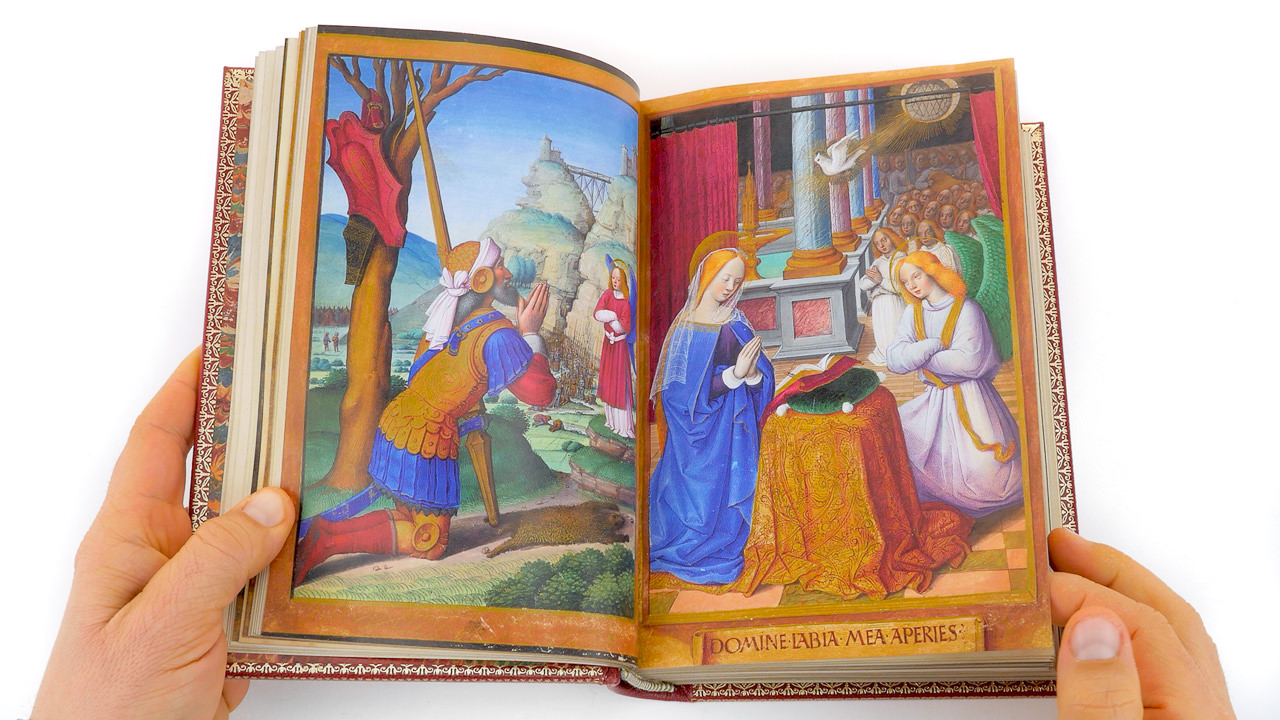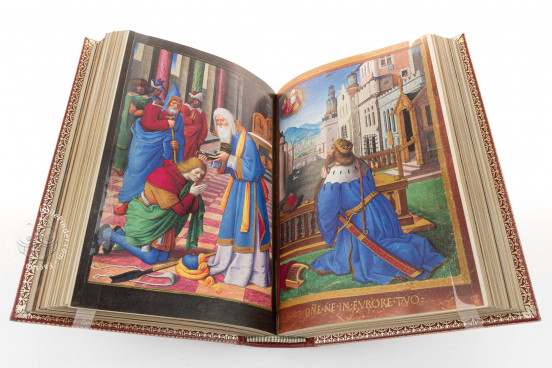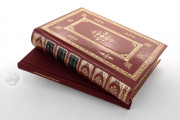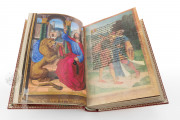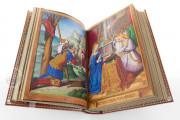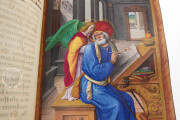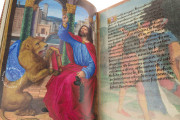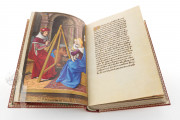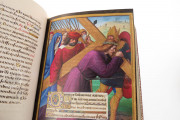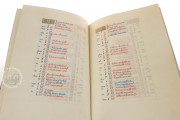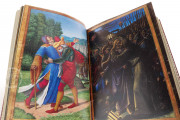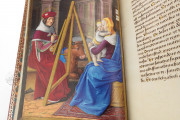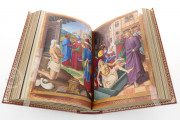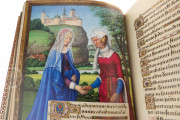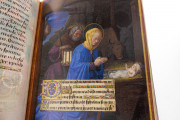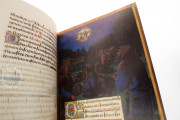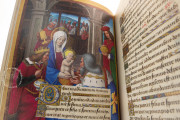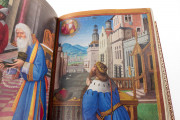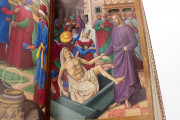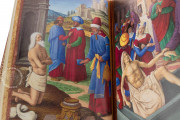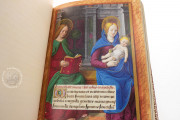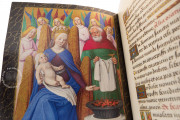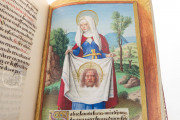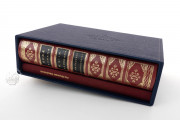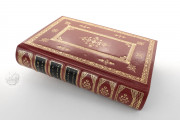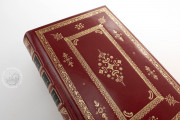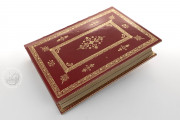With its twenty-five full-page miniatures masterfully crafted by the illuminator Jean Poyer, the Briçonnet Hours stands out as a magnificent example of Northern Renaissance book illumination. Produced around 1485 in the town of Tours, an epicenter of French manuscript illumination, the codex features a unique combination of exceptionally radiant colors and richness of detail.
The Briçonnet Hours takes its name from its patron Guillaume Briçonnet, a French Cardinal and statesman who died in 1514. It is particularly relevant for its intricate Bible scenes as seen from the perspective of late fifteenth-century Europe.
A Bright Jewel of French Illumination, Inspired by Italian Painting
The volume's painted decoration features twenty-five full-page miniatures glowing with rich colors and details. In contrast to the tradition of Books of Hours, Jean Poyer decided to illustrate even secondary textual introductions with large miniatures. Relevant parts, such as Office of the Virgin, St. John's Passion, the Penitential Psalms, and the Office of the Dead, all begin with two full-page miniatures reproduced on a double-page.
Jean Poyer purposefully treated his miniatures as paintings, resulting in a vibrant combination of intense colors — red, blue, green, purple, and gold — perspective, and expressive characters. Thanks to his knowledge of courtly environments, the artist rendered aristocratic clothing items and accessories with stunning detail.
One of the best illuminators and panel painters of his time, Jean Poyer worked for Louis XI of France, Anne of Brittany, and both her spouses Charles VIII and Louis XII of France. After his stay in Italy, Poyer was strongly influenced by early Renaissance art, especially architectural features, as can be seen in the background of fol. 11v, which shows the city of Venice.
Little is known about the artists' life, apart from the fact that he was born around 1445 in Tours and was active from 1465 until 1498. The Briçonnet Hours is the first manuscript attributed to Jean Poyer.
The Life of an Aristocratic Patron
Guillaume Briçonnet, born into an aristocratic Parisian family around the year 1472, was named treasurer of France by King Charles VIII. After the death of his spouse in 1491, he started his long career as a clergyman, always keeping in contact with the most wealthy and powerful men of his time. As Bishop of Meaux, he implemented a program of reform based on humanistic principles. He died in 1514 in Narbonne, where an imposing tomb was built in his memory.
Binding description
The red leather binding embossed in gold was crafted in the eighteenth century.
We have 1 facsimile edition of the manuscript "Briçonnet Hours": Das Briçonnet-Stundenbuch facsimile edition, published by Quaternio Verlag Luzern, 2020
Request Info / Price
